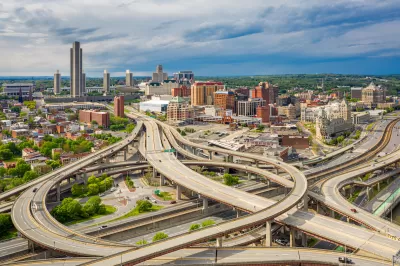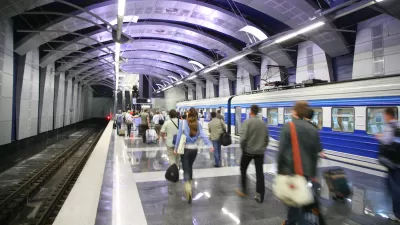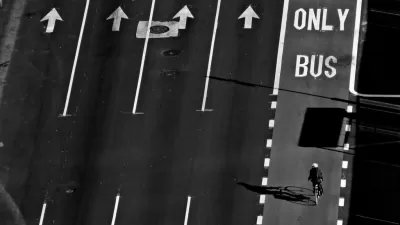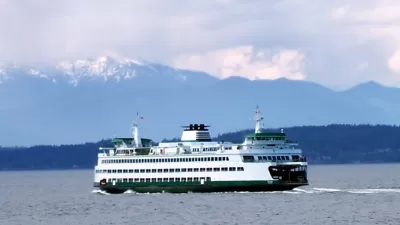So far, the department has allocated 90 percent of its federal transportation funding to road projects and less than 1 percent to transit.

New York State expects roughly $36 billion in funding from the Bipartisan Infrastructure Law to upgrade its transportation system, but so far, the state has largely directed the funds to road projects rather than more climate-friendly projects, reports Sam Mellins in New York Focus.
According to Mellins, the state Department of Transportation has already allocated over $1 billion in funding to transportation projects, with 90 percent of it going to road projects. Meanwhile, “A single highway widening project in Queens is slated to use over $700 million in federal funds.”
In some cases, the department has redirected funds away from bike, transit, and pedestrian projects. “Last year, Hochul and state lawmakers used over $20 million from a fund meant to boost options in New York City’s transit deserts to offer free bridge tolls to some drivers in the Bronx and Queens, Gothamist reported.”
While the infrastructure law was in part designed to shift the transportation sector away from fossil fuels, “If states continue to pursue highway expansions, the resulting emissions from car trips could cancel out the climate-friendly aspects of the infrastructure law, potentially making it a net cause of increased emissions, a Georgetown study found.”

Study: Maui’s Plan to Convert Vacation Rentals to Long-Term Housing Could Cause Nearly $1 Billion Economic Loss
The plan would reduce visitor accommodation by 25,% resulting in 1,900 jobs lost.

Placekeeping: Setting a New Precedent for City Planners
How a preservation-based approach to redevelopment and urban design can prevent displacement and honor legacy communities.

Using Old Oil and Gas Wells for Green Energy Storage
Penn State researchers have found that repurposing abandoned oil and gas wells for geothermal-assisted compressed-air energy storage can boost efficiency, reduce environmental risks, and support clean energy and job transitions.

Washington State Plans Ambitious ‘Cycle Highway’ Network
The state is directing funding to close gaps in its existing bike network and make long-distance trips more accessible.

Homeowners Blame PG&E for Delays in ADU Permits
The utility says it has dramatically reduced its backlog, but applicants say they still face months-long delays for approvals for new electrical work.

Rethinking Wildfire Defense: How a Landscape Approach Can Protect Neighborhoods
Post-fire analysis of the Eaton Fire reveals that a landscape approach — including fire-resistant vegetation, home hardening, and strategic planning — can help reduce wildfire risk, challenging assumptions that trees and plants are primary fire hazards.
Urban Design for Planners 1: Software Tools
This six-course series explores essential urban design concepts using open source software and equips planners with the tools they need to participate fully in the urban design process.
Planning for Universal Design
Learn the tools for implementing Universal Design in planning regulations.
Borough of Carlisle
Caltrans
Heyer Gruel & Associates PA
Institute for Housing and Urban Development Studies (IHS)
City of Grandview
Harvard GSD Executive Education
Salt Lake City
NYU Wagner Graduate School of Public Service
City of Cambridge, Maryland





























